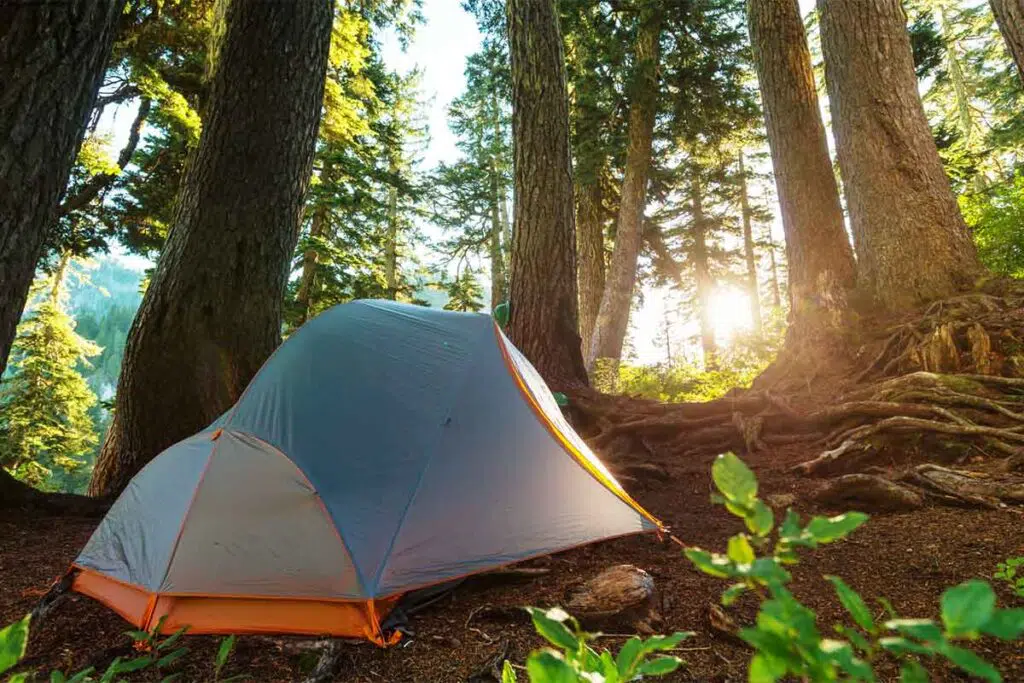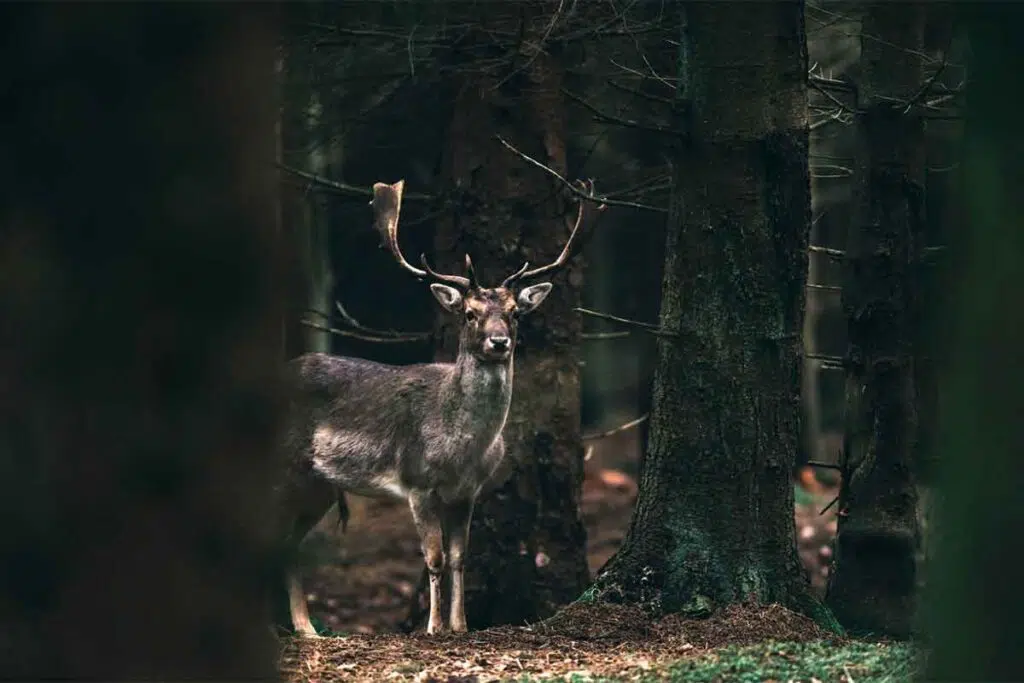Choosing the right trail for your off-road adventure is essential to ensure you stay safe while having fun. The Sam Houston National Forest has a lot to offer to different types of outdoor enthusiasts. As a national forest, though, there are things that you can and can’t do in the area, as well as rules to follow.
So, are you allowed to use your ATV, dirt bike, and more on Sam Houston National Forest trails? This national forest is under the multi-use management system, and the Multiple Use-Sustained Yield Act governs it. Meaning there is a designated area where you can ride and drive your off-road vehicles.
Occupying a large piece of land, knowing where to drive and where not to drive your off-road vehicles or ATVs is essential. You must also have a good knowledge of how safe you’ll be in the area, what other activities you can do, and what you need to prepare to be allowed to use the trails. We’ll discuss all those and more to help you have a convenient, safe, fun, and uninterrupted experience in Sam Houston Forest.

Sam Houston National Forest ATV and Off-Road Trails
This 163,037-acre piece of land is managed well to ensure the public can maximize its use without negatively affecting wildlife, natural resources, and more. The forest has also been divided into different categories, enabling you to identify what recreation activity you can do in a particular area.
As one of the four recognized national forests in Texas, Sam Houston has several trails that you need to be aware of to ensure you’re not breaking any rules or laws. Also, make sure you call the Ranger’s Office before heading to the area to ensure the area you want to visit is open to the public.
The Trails
Eighty-five miles of the forest’s land has been developed as a multi-purpose trail for safe and sustainable riding adventures. Apart from being designated as Sam Houston National Forest ATV trails, it’s also great for horseback riding, biking, and hiking.
It has an elevation ranging from 200 to 350 feet, with some steep hills, shades, berms, and roads. You’ll also love that it has lots of single tracks, a few water crossings, and marked or unmarked hazards.
Component-wise, the trail has little dust, mud, and rocks, some loose dirt, and mostly hard pack soil. If you’re worried about your skill as a rider or won’t be able to handle the trail, most of it is perfect for intermediate drivers, while some areas are great for novice ones.
Below are the different trail names that you can traverse using your ATV or off-road vehicle.
- NW-Blue Extension
- NW-Blue Loop
- West Green
- West Orange
- West Red
Each off-road vehicle trail has a starting point that is also considered as the endpoint because of its loop design. You can also find red-colored direction arrows so that you don’t get lost and traverse restricted areas. There’s also a parking area for your convenience.
Vehicle Fuel and Water Source
Your ATV running out of fuel won’t be a problem because there are stations where you can purchase diesel and gasoline. Most ATVs still have lead-acid batteries, requiring distilled water to function properly and prevent any damage to the engine. As such, you can also find stations where you can pump up your vehicle’s water level.
The Rules
Keep in mind that you need to meet particular requirements before bringing and using your off-road vehicle to and on the Sam Houston National Forest ATV trails. That is both for the vehicle and the driver.
Vehicle
You can only use a registered, street-legal off-road vehicle with an OHV decal in the Sam Houston trails. It must also have an exhaust system or a spark arrestor that emits at most 96 decibels of sound. Likewise, it should have working taillights and headlights, especially if you’ll operate it half an hour before sunrise and after sunset.
You’re allowed to use motorcycles, dirt bikes, UTVs, ATVs, and SXS, as long as they have a maximum width of 50 inches. Anything larger than this won’t be able to enter the trail entry posts or gates.
Operator or Driver
Each operator should have a multi-use trail pass. You can download and print the non-refundable and non-transferable pass, valid until 11:59 PM of the date indicated on it. If you lost the pass, you would need to have it replaced and pay for additional fees.
You must also have a valid ID, a state driver’s license, and proof of payment. Additionally, make sure you wear DOT-approved protective gear. Wearing a blaze orange vest or shirt is also required during the hunting season. For ATV riders, you must also have proof that you’ve completed an ATV operator education course.
On that note, whatever you’re driving, staying on the trail is essential to prevent any untoward accidents.
Sam Houston National Forest Camping and Hiking

Whether or not you ride your ATV or off-road vehicle, you can camp and hike in the area. Just make sure you park your ride on the appropriate parking spot since you can’t bring it to the camping and hiking trails.
Camping
If you plan to camp out before, during, and after your off-road riding adventure, there are three well-developed campsites, namely Cagle, Double Lake, and Stubblefield Recreation Areas, that you can consider. However, you need to make a reservation via a phone call or an email. You can enjoy various activities such as boating, fishing, hunting, hiking, and bird watching, on all these sites.
Hiking
On the other hand, if you want just to hike, the forest also has a designated trail for it. Having a portion that gained the National Recreation Trail status, you can hike year-round on Sam Houston’s Lone Star Hiking Trail. Although, spring and winter are the peak seasons.
Similar to the off-road trails, the hiking trails have markings that serve as a guide. Likewise, you should also wear highly visible clothing during the hunting season. Lastly, apart from the Sam Houston National Forest camping sites, you can also primitively camp out off the trail, except during the hunting season.
How Much Does it Cost to Get Into Sam Houston National Forest?
The amount you’ll spend to get into this national forest will depend on the kind of activities you want to enjoy. It’s also dependant on how long you plan to stay in the area. Below is a table guide for some entrance and activity fees that you need to make a note of when planning your trip to the forest.
| Particulars | Fees |
|---|---|
| Cagle Recreation Area | $5 |
| Double Lake Recreation Area | $7 |
| Stubblefield Recreation Area | $7.50 with a pass; $15 without a pass |
| Cycling or Walking | $1 |
| Vehicle | $7/vehicle |
| Primitive Camping | $20 |
| Multi-Use Trail Recreation Pass | $5/day or $25/year |
| Hiking and Forest Exploration | Free |
| Parking | Free |
The good thing about the trails is finding trailhead kiosks where you can pay entrance fees, where they’re required.
Besides the pass, entrance, and activity fees, you will also need to pay a certain amount for extra amenities, especially when camping. Similarly, you would need to spend more when you opt to book Sam Houston National Forest cabins.
Sam Houston National Forest Safety
Whether you plan to have a one-day adventure or travel out of town to relax and have fun, checking how safe you would be is important. Being familiar with Sam Houston National Forest Trail maps and guides won’t be enough as it only ensures you don’t get lost. Three of the other most critical safety factors that you need to look at are soil condition, wildlife, and wildfire since Sam Houston is a forest.
How’s the Soil Condition in Sam Houston?
The soil in the forest has a slightly erosive rating, especially the ones near the bodies of water. Its composition includes clay shale, sand, clay, sandy clay, and non-calcareous sediments from the Tertiary and Pleistocene Ages.
Rest assured that Sam Houston has the best soil condition when it’s open to the public. The typical time that the forest is closed when the soil has a high level of moisture. That is right after a rain or a storm.
Are There Bears in Sam Houston National Forest?
Bears are among the wildlife that most people are often scared of, which are rare in Texas. Although sightings are starting to become common, there are no reports in Sam Houston as of writing. That’s why even if you don’t stay in Sam Houston National Forest cabins and just camp out in the area, you will be safe from bears.
What Wildlife Are Present in the Area?

The forest has a lot of game animals that you can hunt as long as you meet the requirements and in the right trail. You can find deer, squirrels, quails, and doves. There are also ducks and fish in and around the streams and lakes within the forest.
Apart from these animals that you can hunt for, this national forest is a habitat of some of the most extinct wildlife, namely bald eagles and red-cockaded woodpeckers. Other wildlife in the area includes white and woodpeckers, screech owls, bluebirds, predatory snakes, and honey bees.
How About Fire Safety?
Wildfire is a natural calamity that can or can’t be prevented and common in forests because of the presence of grasses and tree leaves that can catch fire due to the sun’s heat. That is especially during the summer season.
Fortunately, there is a cooperative action plan and agreement led by the U.S. Forest Service and the Texas Forest Service. It includes coordinating wildfire prevention, enforcing laws, aerial detection activities, and wildfire suppression. The National Forest also has a prescribed fire system that can prevent forest fuel accumulation, minimizing the damages caused by wildfire.
Enjoying Sam Houston National Forest
The Sam Houston National Forest isn’t just well-managed but also well-protected because of the many wildlife, trees, bodies of water, and other natural resources found in it. Similarly, it’s well maintained, and there are protocols they follow in terms of landslide, erosion, and fire safety.
When looking at Sam Houston National Forest trail maps, you’ll find that there are designated areas for camping, hunting, hiking, cycling, off-road riding, and more. With so much going on within the area, it’s important to keep the rules in mind. That is especially during the hunting season, or from November to January.
Most of the critical ones were discussed above, and they’re not too hard to follow. That said, if you still haven’t bought safety gear for your ATV, UTV, and SXS riding, all you would need are a DOT-approved helmet (view on Amazon) and a pair of eye protection. On the contrary, it would be best to wear the proper dirt bike attire (view on Amazon) and boots (view on Amazon) when you plan to ride your dirt bike.
Kris is an avid off-roader and outdoor enthusiast who loves to brave the elements and take on challenging terrain. He also enjoys sharing his passion and knowledge with others so that they, too, can appreciate the ride.
About Kris
